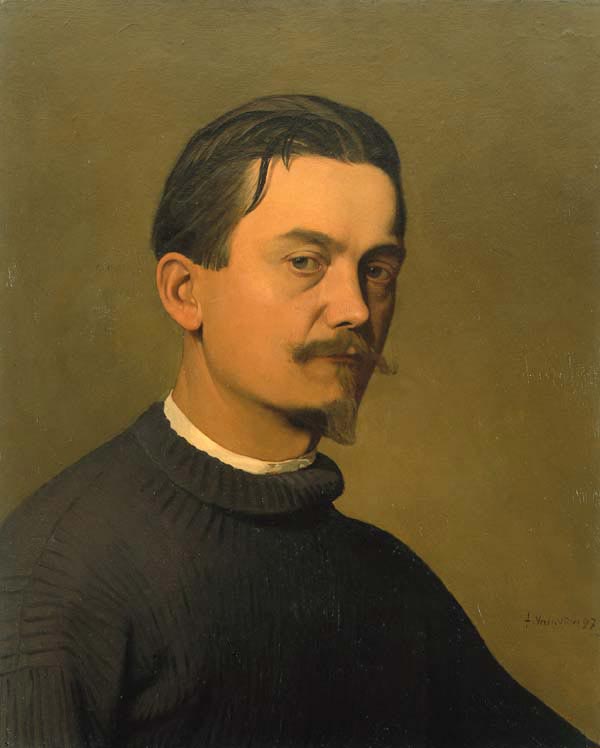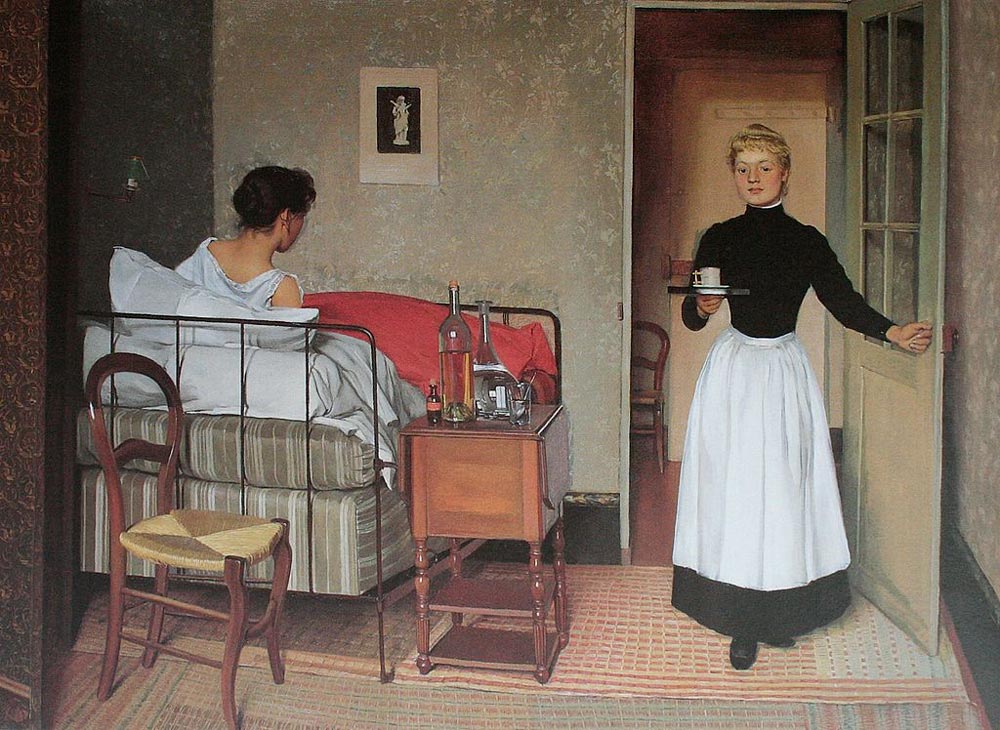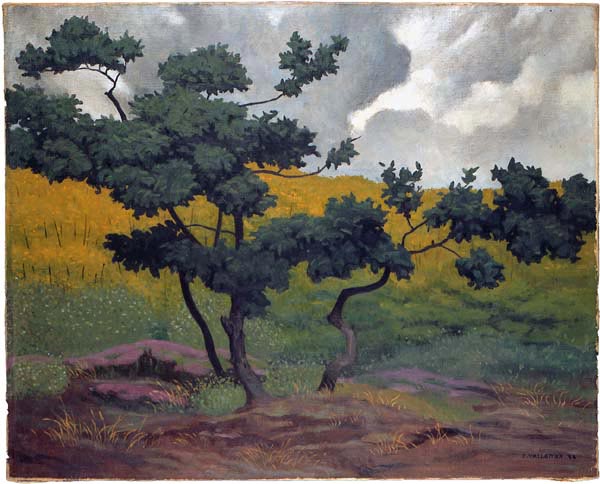| Félix Vallotton | |
|---|---|
 |
|
| Born | Dec. 28, 1865 |
| Died | Dec. 29, 1925 |
| Nationality | Swiss |
| Education | Académie Julian |
| Movement | Les Nabis |
| Field | Painting Printmaking |
| Works | View Complete Works |
Félix Vallotton was born in Lausanne, Switzerland in 1865 and established a reputation as a fine painter and engraver. He was a member the Nabis group who, at the end of the 19th century, combined the Post-Impressionist techniques and style with new avant-garde methods. Although he never achieved the same level of prestige as Pierre Bonnard, the leader of the Nabis, Vallotton is a regular name in art auctions and his works are exhibited in the most reputable museums and galleries.
Early Career
In his early years he became interested in portrait painting. He occasionally returned to Switzerland, where he painted landscapes in the region of Vaud. In Paris he became interested in the art of engraving. Two of his etchings were inspired by Jean-François Millet and Rembrandt.
 In 1891, he produced his first woodcuts and presented ten paintings in his debut at the Salon des Indépendants. Around this time, he was initiated into the Nabis, along with Édouard Vuillard, Paul Sérusier and Bonnard. The Nabis, which translates as the “Prophets,” based their style, subject matters, and techniques on the works of Paul Gauguin, Vincent Van Gogh, Toulouse-Lautrec, and others. The Nabis merged these separate styles into a single defined style that was later taken up by famous artists like Cézanne and Matisse.
In 1891, he produced his first woodcuts and presented ten paintings in his debut at the Salon des Indépendants. Around this time, he was initiated into the Nabis, along with Édouard Vuillard, Paul Sérusier and Bonnard. The Nabis, which translates as the “Prophets,” based their style, subject matters, and techniques on the works of Paul Gauguin, Vincent Van Gogh, Toulouse-Lautrec, and others. The Nabis merged these separate styles into a single defined style that was later taken up by famous artists like Cézanne and Matisse.
Vallotton continued his woodblock engraving, and in 1892 the magazine l’Art et l’ Idée printed an article full of praise for his work. A good example of the Nabis style is the portrait of Puvis de Chavannes, dated 1898, a posthumous tribute to the controversial symbolist painter. He made his living at this time from producing illustrations for books and magazines, but also earned money by undertaking custom portraits.
Growing Reputation
 In 1893, Vallotton presented an exhibition at the Salon des Indépendants which included his work “On an Autumn Afternoon.” This work, which is currently displayed by the Kunstlerhauss museum in Zurich, is an excellent example of how Vallotton developed a style of painting that transferred woodcut techniques to oil on canvas. He exhibited with the Nabis in the Ambroise Vollard Gallery in Paris in 1897 and two years later in the Durand Ruel in the same city. In 1900, he obtained French nationality.
In 1893, Vallotton presented an exhibition at the Salon des Indépendants which included his work “On an Autumn Afternoon.” This work, which is currently displayed by the Kunstlerhauss museum in Zurich, is an excellent example of how Vallotton developed a style of painting that transferred woodcut techniques to oil on canvas. He exhibited with the Nabis in the Ambroise Vollard Gallery in Paris in 1897 and two years later in the Durand Ruel in the same city. In 1900, he obtained French nationality.
An important milestone in his career was the exhibition of a dozen of his paintings in Vienna in January 1903, which won the praise of Ferdinand Hodler and Gustav Klimt. In 1909, Vallotton participated in the foundation of the Acádemie Ranson with Vuillard, Bonnard and others.
It was a period of commercial success for Vallotton. However, the First World War had repercussions on their sales and caused financial problems. Vallotton produced several works inspired by the conflict. He went to live in Cagnes-sur-Mer in the winter of 1920. In November 1925, he was hospitalized and died after an operation for cancer. A foundation for the study and promotion of the art of Vallotton was established in Lausanne in 1998.